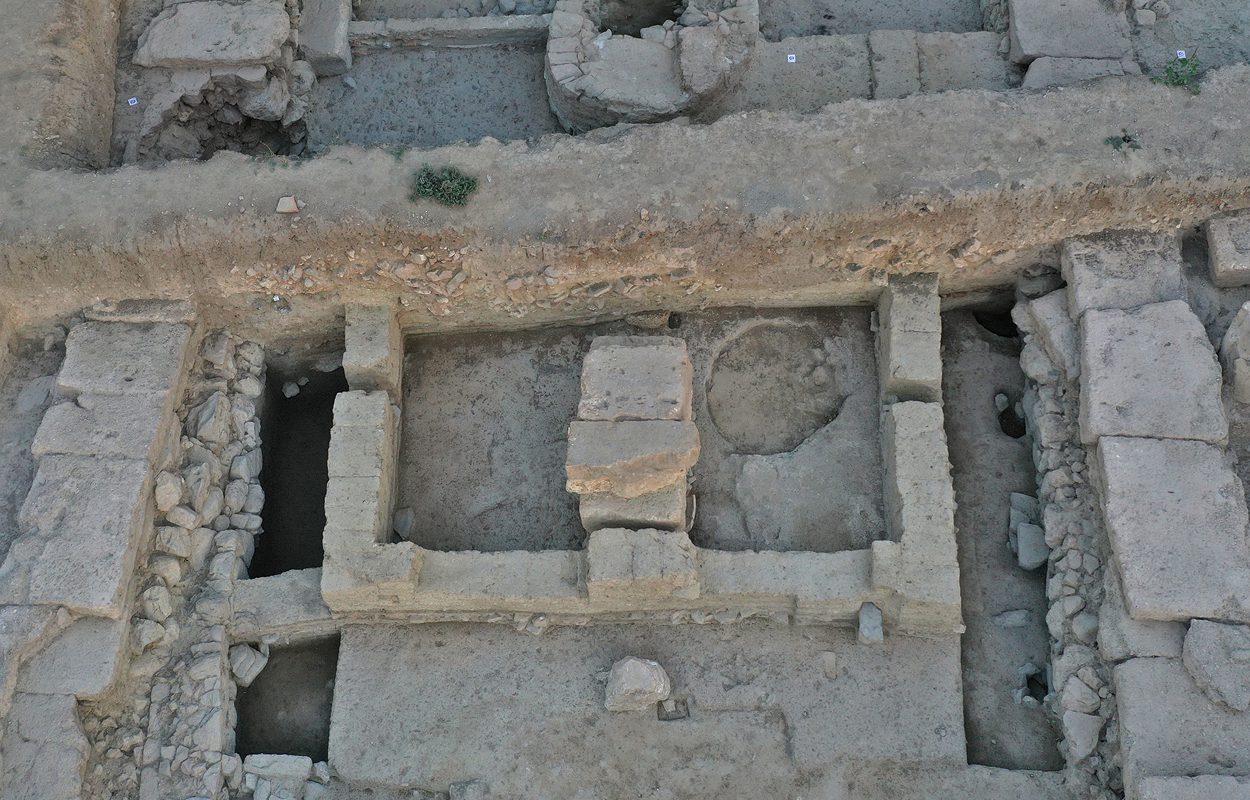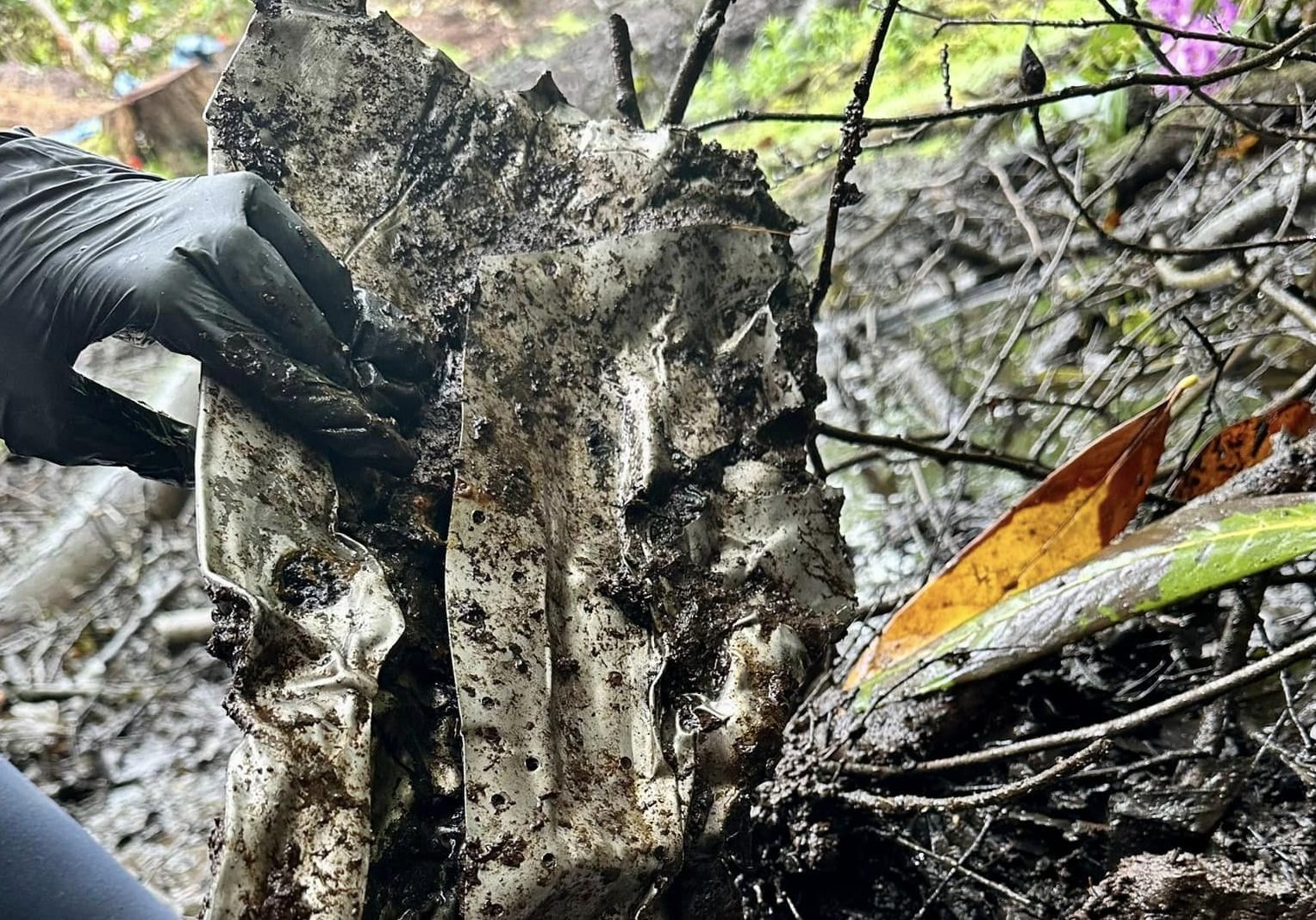Archaeology
Excavation of Artemis temple reveals evidence of animal sacrifices

Archaeologists excavating a temple complex at the Artemis Amarynthos sanctuary have uncovered evidence of animal sacrificial rites and new insights into the temple configuration.
The Artemis Amarynthos sanctuary is located in Amarynthos on the Greek island of Euboea.
During antiquity, the sanctuary was the centre of worship in dedication to Artemis (the goddess of the hunt, wild animals, and nature) in Northern Greece, and served as the annual pilgrimage destination from Eretria during the Amarysia festival procession.
Excavations at the sanctuary have been ongoing for the past four years, with this season’s dig uncovering further remains of a temple dated to the 7th century BC during the Archaic Period.
Altar – Image Credit : ESAG
According to the researchers, the temple has an apsidal floor plan and measures 34 metres in length, which coincidentally corresponds to 100 feet in the Greek metric system. Archaeologists found hearths or altars where animals were sacrificed to honour Artemis, in addition to layers of ash and calcined animal bones.
In traditional animal sacrifices, the animal was led in procession to the altar and slaughtered. The carcass would then be butchered and the internal organs, bones and other inedible parts burnt as the deity’s portion.
Image Credit : ESAG
Excavations also found a large number of offerings consisting of vases, weapons, jewellery, and a finely chiseled ivory head with Egyptian features.
Evidence of burning indicates that the temple was partially destroyed by fire during the 6th century BC but was restored with mud-brick walls, before being entirely demolished for a new structure by the end of the century.
Deep trial trenches also uncovered a building from the 9th or 8th century BC, in addition to bronze animal figurines and a terracotta bull’s head from the late Bronze Age, suggesting that the site held ceremonial significance dating back to prehistoric times.
Header Image Credit : ESAG
This content was originally published on www.heritagedaily.com – © 2023 – HeritageDaily
Archaeology
Archaeologists search crash site of WWII B-17 for lost pilot

Archaeologists from Cotswold Archaeology are excavating the crash site of a WWII B-17 Flying Fortress in an English woodland.
The B-17 Flying Fortress is an American four-engine heavy bomber aircraft developed in the 1930s for the United States Army Air Corps (USAAC).
The bomber was mainly used in the European theatre for daylight strategic bombing, complimenting the RAF Bomber Command’s night bombers in attacking German industrial, military and civilian targets.
Cotswold Archaeology have been tasked by the Defense POW / MIA Accounting Agency to search the crash site for the remains of the pilot, who died when the B-17 crashed following a system failure in 1944.
Image Credit : Cotswold Archaeology
At the time, the plane was carrying a payload of 12,000lbs of Torpex, an explosive comprised of 42% RDX, 40% TNT, and 18% powdered aluminium. Torpex was mainly used for the Upkeep, Tallboy and Grand Slam bombs, as well as underwater munitions.
The pilot was declared MIA when the plane exploded into an inferno, however, using modern archaeological techniques, the researchers plan to systematically excavate and sieve the waterlogged crash site to recover plane ID numbers, personal effects, and any surviving human remains.
It is the hope of the excavation team members that they will be able to recover the pilot’s remains and return him to the United States for burial with full military honours.
The Defense POW/MIA Accounting Agency (DPAA) is an agency within the U.S. Department of Defense whose mission is to recover unaccounted Department of Defense personnel listed as prisoners of war (POW) or missing in action (MIA) from designated past conflicts.
Header Image Credit : Cotswold Archaeology
Sources : Cotswold Archaeology
This content was originally published on www.heritagedaily.com – © 2023 – HeritageDaily
Archaeology
Roman Era tomb found guarded by carved bull heads
Archaeologists excavating at the ancient Tharsa necropolis have uncovered a Roman Era tomb guarded by two carved bull heads.
Tharsa is located near Kuyulu village in southeastern Turkey along the Adıyaman-Şanlıurfa Highway.
The site was situated on a major Roman highway from Doliche to Samosata, which today consists of a two settlement mounds and a large necropolis that dates from the 3rd century to the Byzantine period.
Excavations first commenced in 2021 which discovered a collection of Turuş Rock Tombs, a type of tomb construction carved directly into the bedrock.
In the latest season, archaeologists have excavated another Turuş Rock Tomb, however, this example was found to have two carved bull heads which is decorated with garlands and rosettes between the horns.
Bull heads, known as Bucranium, were a form of carved decoration commonly used in Classical architecture. In Ancient Rome, bucrania were often used on the friezes of temples in the Doric order of architecture, later influencing the architecture of buildings from the Renaissance, Baroque, and Neoclassical periods.
Architectural examples of bucrania are representations of the practice of displaying garlanded, sacrificial oxen, whose heads were displayed on the temple walls.
Like similar Turuş Rock Tombs, the bull heads are carved directly into the bedrock, guarding a dozen rock cut steps descending into the burial chamber which has three arched niches known as acrosolia.
Mustafa Çelik, Deputy Director of Adıyaman Museum, said, “Tharsa Ancient City consists of 3 main archaeological areas: Big Mound, Small Mound and Necropolis Area. We started excavations in the necropolis area in 2024. We added 2 more rock tombs to the rock tombs we had previously uncovered. One of them is the rock tomb we identified today.”
Header Image Credit : Adıyaman Museum
Sources : Adıyaman Museum
This content was originally published on www.heritagedaily.com – © 2023 – HeritageDaily
-

 Ghosts2 years ago
Ghosts2 years agoZozo: The Ouija Board Demon
-

 Space2 years ago
Space2 years agoScientists claim to have found the answer what existed before the Universe
-

 Ghosts2 years ago
Ghosts2 years agoOld Coot of Mount Greylock
-
Archaeology1 year ago
New discoveries at Ekʼ Balam during conservation works
-

 General3 years ago
General3 years agoUC San Francisco engaging in horrifying experiments, organ harvesting of live babies in the name of “science”
